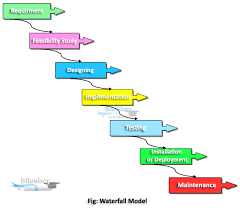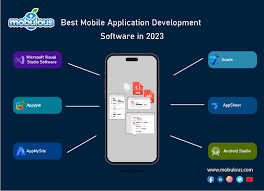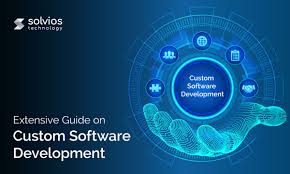Empowering Business Growth Through Software Development Services
The Importance of Software Development Services
In today’s digital age, software development services play a crucial role in helping businesses stay competitive and meet the evolving needs of their customers. From custom applications to complex systems integration, software development services encompass a wide range of solutions tailored to enhance efficiency, productivity, and innovation.
Customized Solutions
One of the key benefits of software development services is the ability to create customized solutions that address specific business requirements. Whether it’s developing a mobile app for better customer engagement or implementing an enterprise resource planning (ERP) system for streamlined operations, custom software solutions can provide a competitive edge by aligning technology with business goals.
Enhanced Efficiency
By leveraging software development services, organizations can streamline processes, automate repetitive tasks, and improve overall efficiency. Custom software solutions can eliminate manual errors, reduce operational costs, and optimize workflows to ensure smooth business operations.
Scalability and Flexibility
Software development services enable businesses to scale their applications as they grow and adapt to changing market demands. Whether it’s adding new features, integrating third-party systems, or expanding user capabilities, custom software solutions offer scalability and flexibility to support business growth.
Competitive Advantage
In a competitive marketplace, having unique software solutions can set businesses apart from their competitors. Software development services allow organizations to innovate faster, deliver superior user experiences, and respond swiftly to market changes – all essential factors in gaining a competitive advantage.
Conclusion
Software development services are essential for modern businesses looking to harness the power of technology to drive growth and success. By investing in custom software solutions tailored to their specific needs, organizations can unlock new opportunities, improve operational efficiency, and achieve sustainable competitive advantage in today’s dynamic business landscape.
Top 7 Frequently Asked Questions About Software Development Services
- What is software development?
- Why are software development services important for businesses?
- What are the key benefits of custom software development?
- How can software development services enhance operational efficiency?
- What factors should businesses consider when choosing a software development service provider?
- How long does it take to develop custom software?
- What is the cost of hiring a software development service?
What is software development?
Software development is the process of designing, creating, testing, and maintaining software applications or systems to meet specific business or user requirements. It involves a systematic approach to building software solutions using programming languages, frameworks, and tools. Software development encompasses various stages, including planning, coding, testing, and deployment, with the goal of delivering high-quality and functional software products. This iterative process allows developers to collaborate with stakeholders, gather feedback, and make continuous improvements to ensure that the final software meets the desired objectives and provides value to its users.
Why are software development services important for businesses?
Software development services are crucial for businesses due to their ability to provide tailored solutions that address specific needs and challenges faced by organizations. By leveraging custom software solutions, businesses can enhance operational efficiency, streamline processes, and optimize workflows to achieve greater productivity and cost-effectiveness. Moreover, software development services enable businesses to stay competitive in a rapidly evolving digital landscape by fostering innovation, improving customer experiences, and adapting to changing market demands. Ultimately, investing in software development services empowers businesses to unlock new opportunities, drive growth, and maintain a strategic edge in today’s dynamic business environment.
What are the key benefits of custom software development?
Custom software development offers a myriad of key benefits that cater specifically to the unique requirements of businesses. One significant advantage is the ability to create tailored solutions that align perfectly with the organization’s goals and processes. Custom software enhances operational efficiency by streamlining workflows, automating tasks, and reducing errors. Moreover, it provides scalability and flexibility, allowing businesses to adapt and grow without limitations. By investing in custom software development, companies gain a competitive edge through innovation, improved user experiences, and rapid response to market changes.
How can software development services enhance operational efficiency?
Software development services can enhance operational efficiency by creating tailored software solutions that streamline processes, automate tasks, and optimize workflows. Custom software applications are designed to meet the specific needs of a business, eliminating manual errors and reducing time-consuming tasks. By implementing software solutions that integrate seamlessly with existing systems and technologies, organizations can improve data accuracy, enhance communication among departments, and increase overall productivity. Additionally, software development services enable businesses to scale their operations efficiently, adapt to changing requirements, and stay ahead of the competition in a rapidly evolving digital landscape.
What factors should businesses consider when choosing a software development service provider?
When selecting a software development service provider, businesses should carefully consider several key factors to ensure a successful partnership. Firstly, evaluating the provider’s expertise and experience in relevant technologies and industries is vital to guarantee that they can deliver tailored solutions that meet specific business requirements. Additionally, examining the provider’s track record, client testimonials, and case studies can offer insights into their past performance and reliability. Transparency in communication, adherence to deadlines, scalability of services, and data security measures are also crucial considerations for businesses seeking a software development partner. By thoroughly assessing these factors, businesses can make informed decisions and choose a service provider that aligns with their goals and values.
How long does it take to develop custom software?
The timeline for developing custom software can vary significantly depending on various factors such as project complexity, scope, requirements, and resources allocated. In general, the development of custom software typically involves several stages including planning, design, development, testing, and deployment. While simpler projects may take a few weeks to a couple of months to complete, more complex projects with advanced features or integrations could take several months or even a year to develop. It is crucial for businesses to work closely with their software development service provider to establish clear timelines and milestones to ensure timely delivery while maintaining quality and meeting project objectives.
What is the cost of hiring a software development service?
When considering the cost of hiring a software development service, it is important to understand that pricing can vary significantly based on various factors such as the complexity of the project, the scope of work involved, the level of customization required, and the expertise of the development team. Typically, software development services offer different pricing models including hourly rates, fixed project fees, or retainer agreements. It is advisable for businesses to discuss their specific requirements with potential service providers to get a detailed quote tailored to their needs and budget constraints. Ultimately, investing in a reputable software development service can yield long-term benefits by delivering high-quality solutions that align with business objectives and drive growth.












